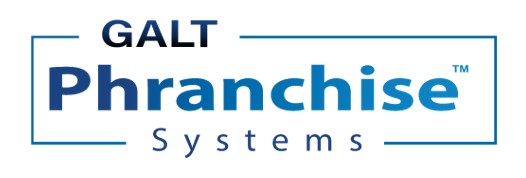Systems Theory, Cybernetics, and Pharmacy
By Wade Smith, Co-Founder and Owner in Executive of Galt Phranchise Systems LLC & Galt Pharmaceuticals
ABSTRACT
TV advertisements for specialty pharmaceuticals by Big Pharma increase prescription volume through patient advocacy directly with their physician. Because of increased reimbursement and margins dispensing specialty drugs, PBMs (Pharmacy Benefit Managers) have aggressively moved to shunt scripts from local independents to their own in-house dispensing. Thus, local independents are less likely to dispense specialty products advertised on television.
Local independents are left with dispensing low-margin generic products causing an increase in store revenue to be tied to increasing script volume. This model yields diminishing returns, and when viewed cybernetically, a relationship remains between the patient and the pharmacy. This relationship provides a construct for the independent pharmacy to maintain its relevance while leveraging strategic growth tactics.
The happenings in life and machines may be described in circular patterns: We sleep, we wake, we work, we eat, then we sleep again….a circular pattern. These (circular) patterns may be studied as “systems theory”. That these circular patterns, or systems, are further impacted by feedback within themselves is the science of “cybernetics”.

Figure 1
We were taught in pharmacy school about feedback mechanisms in physiological systems, and how they may be impaired by disease or improved by health. We spent much longer studying body systems in school than the larger health systems that would build our careers. The health care system I was introduced to while a pharmacy student was simple: the patient saw a physician, the physician treated with a prescription, the prescription was filled by the pharmacist, the pharmacist dispensed medication to the patient.

Figure 2
The speed of innovation has been breathtaking over the past forty years. Discovery and technology evolved health systems through additional contributors, mechanisms, and processes. Understanding systems not only illustrates “what” is occurring at any point in time in an environment but may also indicate possibilities of change at other point(s) within the system itself. If one part of the system changes…. then the whole system changes; For Example using Figure 1, having a big lunch might negate the desire for dinner, or an afternoon nap may delay evening sleep.
What about the larger systems at work within the business of independent pharmacy? How may the entry of new participants change old systems to new and can new entries threaten seemingly non-related participants existing in the old? To answer, cybernetic science proves helpful.
Assume the question: What impact, if any, does the proliferation of TV advertising by Big Pharma have on the local Independent Pharmacy? Let us consider two issues: 1) TV advertising of specialty drugs by Big Pharma, and 2) Business of Independent Pharmacy. These two issues are seemingly different and completely unrelated. However, they do share commonalities: prescription drugs, patients, and a payer (often a PBM). Let’s look at them as a system.
Big Pharma spent nearly $7 billion each of the past two years marketing directly to consumers. These ads cast a wide net targeting an audience from few to many. Examples include diseases that are less common (e.g. myasthenia gravis, carcinomas), difficult to discuss (e.g. Pyrones, Crohn’s), or more common (e.g. arthritis, diabetes). As Big Pharma gained experience with consumer advertising, marketing expenditures shifted to support its growth. Why? Because TV commercials worked – and they still do.
Investments made in TV advertising produce a satisfactory return – or else they would not run. To generate the return, the products advertised are often high-cost specialty drugs. TV ads marketing specific generic drugs would yield negative returns – which is why they are not seen.
Qualitative research of physicians’ perspectives of TV advertising identifies a consistent concern when patients ask for a drug product they saw advertised. The concern is not if it is the right drug, the right patient, or the right time. The concern is if they as the physician do not prescribe the drug, they will lose the patient to another physician who will prescribe the drug for them.
As Big Pharma embraced mass advertising and the use of specialty pharmaceuticals increased, PBMs aggressively moved specialty dispensing in-house rather than to pay local network pharmacies to do so. This diverted the higher margin specialty products to the PBM while leaving the lower margin generic products to their pharmacy network, including many Independent Pharmacies. Because they dispensed the products, PBMs were able to bill their clients directly, advancing any pricing spread themselves.

Figure 3
The cascade of events within the healthcare system grows with each new entry. Surprisingly, the addition of direct-to-consumer advertising does not “grow” the business as one may think. Its effect on physicians, pharmacy and patients is substantial – and previous contributions offered by local network pharmacies are diminished. Figure 3 illustrates this, even suggesting the local pharmacist is not needed.
However, a significant cybernetic relationship is discovered: Patient feedback mechanisms with their local pharmacist (Figure 4).
Note the TV commercial’s impact shifts the system’s efficiency from clinical to logistical. Even though a network-independent pharmacy may not dispense (nor receive any revenue) from a specialty product initiated by a TV advertisement, they no doubt still field patient questions regarding the drug. A patient cannot get immediate consultation from a TV commercial or even from the Big Pharma manufacturer. Yet, the local pharmacist remains…even though they were denied the opportunity to fill the profitable prescriptions (Figure 3). The question then to ponder is, “Is the pharmacy trading their experience with the patient, knowledge of the drug, and consultation time for…. patient gratitude”. While gratitude is a worthwhile cause, it is not revenue.

Figure 4
Do TV commercials impact a complete healthcare system? Absolutely yes, but independent pharmacists are sacrificed. The more removed independent pharmacists become from prescribers or patients, the less value they have to offer. However, if they are a part of the system, they still may find value through cybernetic tactics.
Synchronicity for pharmacists can only occur if we learn to seize a place for ourselves within a system attempting to squeeze us out. Independents must actively seek new strategies to grow their businesses. Should they fill specialty prescriptions? Sure, if they could. However, much of that business is already gone. Should they just do more of what they’ve been doing…simply fill more prescriptions? Nope, that is a race to nowhere. But what if they looked at their business differently – bringing more purpose to patient counseling and meaningful clinical engagement with physicians? This leverages the cybernetic relationship established from the basic health system: patient–physician–pharmacist. No one is closer to drug dispensing and the patient than the independent pharmacist – whether they see it as a strategy to leverage is theirs to decide.
Follow us on LinkedIn at Galt Phranchise Systems LLC and Galt Pharmaceuticals


